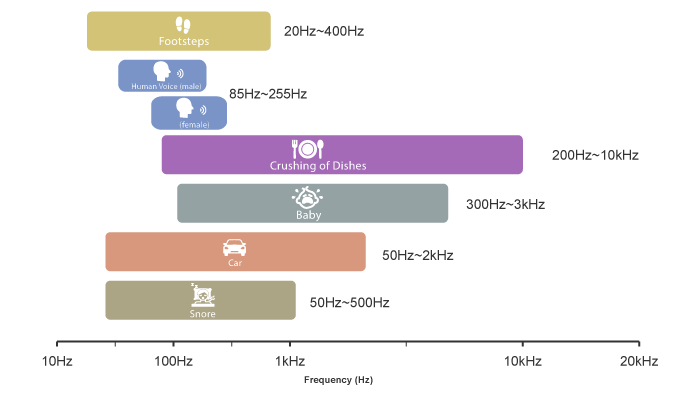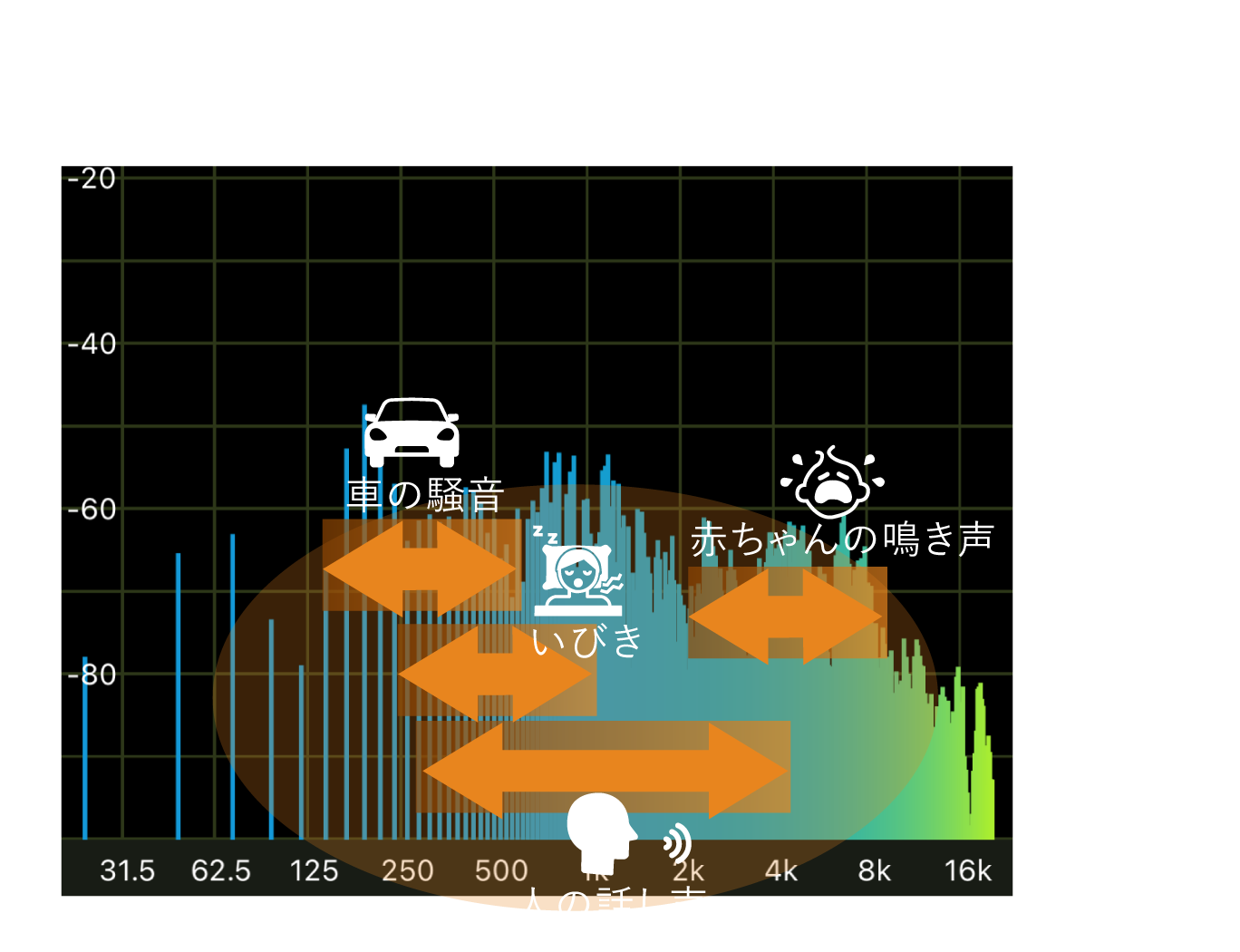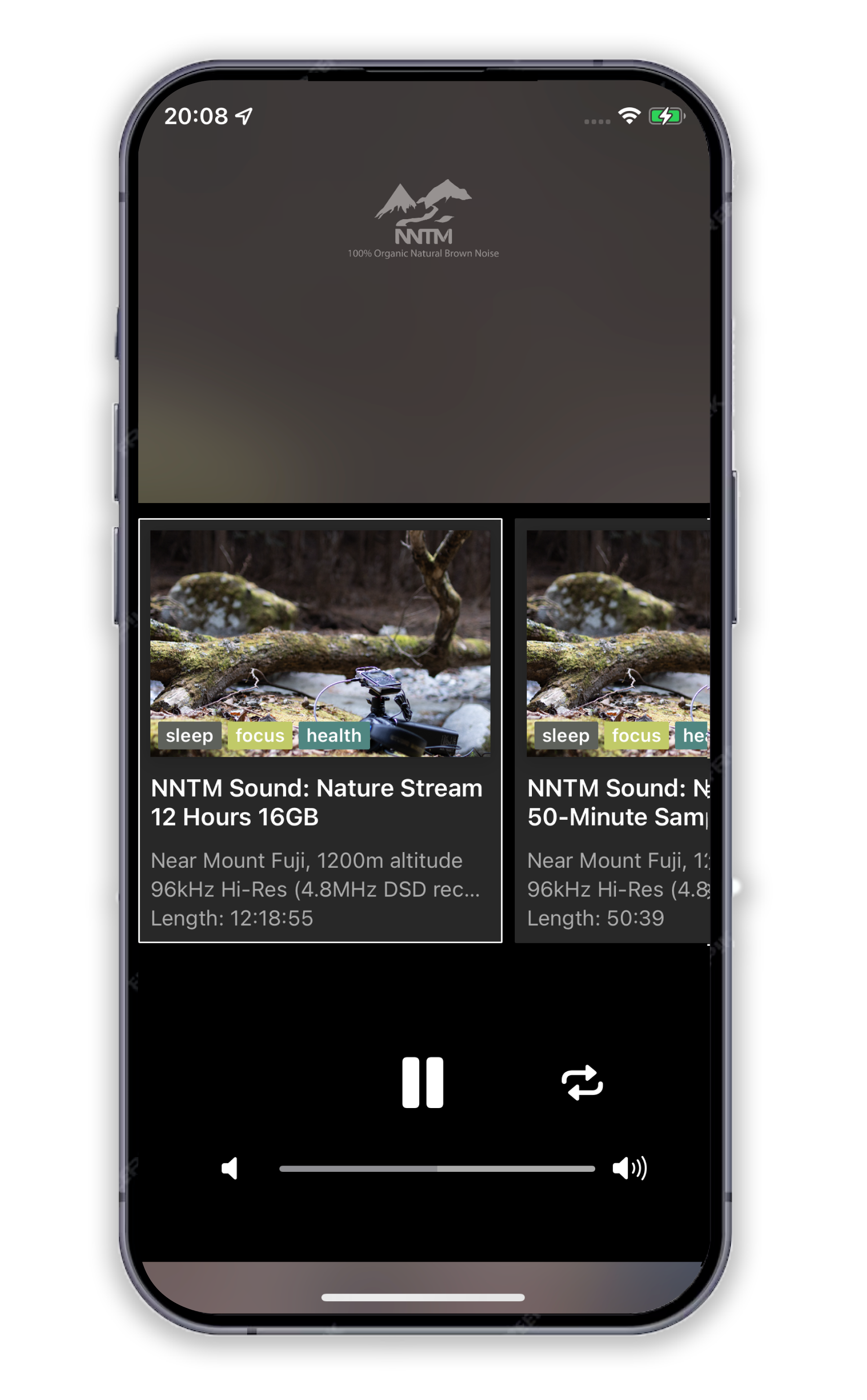Brown Noise Has a Similar Frequency Range to Everyday Sounds
Brown Noise is a type of noise (unwanted sound) characterized by especially abundant energy in the low to mid frequency range.
It is said that much of the noise generated by human activity is concentrated in the midrange of tens to thousands of Hz.
For example,
- Footsteps and sounds from people walking upstairs: 20Hz–400Hz
- Human voices: 85Hz–180Hz for men, 165Hz–255Hz for women
- Clashing dishes: 200Hz–10kHz
- A baby’s cry: 300Hz–3kHz
- Passing cars: 50Hz–2kHz
- Snoring: 50Hz–500Hz

Typical noise frequency bands center around tens to hundreds of Hz
As you can see, the frequency bands of everyday noises range from tens of Hz up to a few thousand Hz, generally centered around tens to hundreds of Hz.
Brown Noise is strongly distributed in this range, giving it a powerful effect in “masking” (drowning out) everyday sounds.
Furthermore, because it emphasizes deeper tones, it is less likely to sound grating and provides a sense of comfort.
How Brown Noise Cancels Out Noise
Human hearing does not simply perceive incoming sounds as they are. Instead, the brain temporarily processes them and unconsciously distinguishes important sounds from unimportant ones.
The brain is constantly filtering incoming sounds and deciding whether or not to ignore them.
When Brown Noise is present, the brain recognizes it as a constant background sound. This creates a “baseline” in the brain’s perception. Only sounds that peak significantly above this baseline stand out; everything else is ignored. By raising the baseline for sounds that might grab our attention, Brown Noise helps create a foundation that makes it easier to disregard unpleasant noises like those listed above.

Brown Noise becomes the background sound, raising the baseline level where noise is ignored
The Difference Between White Noise and Brown Noise
A similar type of noise is White Noise. White Noise distributes energy more evenly across frequencies than Brown Noise, and some people find it harsh. In contrast, Brown Noise emphasizes deeper tones, providing a comforting quality reminiscent of the ocean or the womb.
Because of its specific frequency characteristics, Brown Noise also overlaps effectively with many everyday noises, making it excellent for masking.
NNTM Is 100% Naturally Derived Yet Covers a Wide Range of Everyday Noises

Building on the qualities of Brown Noise, NNTM further expands its coverage range
It is possible to generate Brown Noise artificially, but the scientific effects of prolonged exposure to artificially generated sounds are not yet fully understood.
Out of respect for nature, the NNTM sound source was developed to produce high-quality recordings that remain faithful to the natural environment. They were recorded in carefully selected mountainous locations and designed not only to inherit the characteristics of Brown Noise but also to cover a broader range of everyday noises.
Many studies suggest that the complex sound patterns created by natural environments—such as mountains, forests, or rivers—can have positive effects on both mental and physical well-being.
By using Brown Noise derived from nature, you can effectively block unpleasant sounds like footsteps, voices, cars, or noise from neighbors in apartments—while caring for your body—to improve your quality of life.




